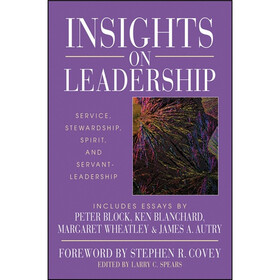
What If the US Stopped Trading with China? Markets, Tech, and the New Trading Playbook
Introduction Imagine waking up to a world where the US and China halt all trade. Your morning latte might taste the same, but the price tags for gadgets, cars, and even groceries could look very different. For traders, this would be a seismic shift in risk, liquidity, and timing. The scenario isnt just about tariffs or policy headlines鈥攊t reshapes how funds move across forex, stocks, crypto, indices, options, and commodities, and it changes the push and pull of DeFi and AI-driven systems. This piece peels back the key channels, lessons for risk management, and the evolving tech toolkit you鈥檇 lean on in a more fragmented global market.
Market ripple across asset classes If trade flows between the world鈥檚 two biggest economies dry up, the most immediate tremor comes from risk sentiment and FX volatility. The dollar could strengthen as a safe-haven bid, while onshore yuan and other currencies swing on policy rumors and repatriation pressures. In equities, global intermediaries reliant on Chinese demand for components, manufacturing, and consumer sales would face headwinds, nudging indices that are tech-heavy or export-led into sharper moves. Commodities tied to China鈥檚 appetite鈥攊ron ore, copper, energy鈥攚ould trade with heightened sensitivity to policy signals and supply chain news. Crypto and digital assets might ride that wave too, acting as hedges or risk-on bets depending on liquidity conditions and market mood. The central message: liquidity would become more selective, spreads could widen, and timing the entry/exit would demand sharper data and faster decision loops.
DeFi and Web3 in the spotlight In a world with frayed cross-border trade, decentralized finance could appear as a double-edged sword. On one hand, on-chain settlements and cross-border liquidity pools could bypass some traditional bottlenecks, offering new resilience. On the other hand, liquidity fragmentation and regulatory ambiguity could intensify. Stablecoins, bridges, and layer-2 solutions would be tested for reliability, throughput, and trust in custody. For traders, this means a sharper need for robust risk controls, diversified on-chain and off-chain data, and discerning which DeFi venues stand up to stress. The ongoing challenge: keeping security and user experience aligned while you navigate multiple ecosystems, from traditional exchanges to decentralized venues.
A trader鈥檚 playbook: risk, leverage, and tech In this scenario, a disciplined playbook wins. Diversify across asset classes to avoid single-point exposure: keep a balanced blend of forex pairs, broad indices, high-liquidity stocks, and selective commodities. Use options and hedging to manage tail risk鈥攖hink protective puts on indices or volatility-aware triggers on major FX pairs. Leverage should be conservative: if you鈥檙e stepping into crypto, keep it modest and pair with hedges; in equities and indices, prefer measured positions and strict stop losses. Embrace charting and data dashboards that blend traditional markets with on-chain indicators鈥擳radingView for price patterns, plus on-chain analytics for crypto and stablecoins. Security isn鈥檛 optional: hardware wallets, multi-sig controls, and routine identity safeguards guard capital when liquidity shifts rapidly.
Future trends: smart contracts, AI, and the evolving edge Decentralized and automated trading will push beyond conventional platforms. Smart contracts could enable more transparent settlement for cross-border trades and synthetic exposures, while AI-driven strategies sift through multi-asset signals faster than humanly possible. That said, challenges linger: latency between on-chain and off-chain data, regulatory clarity, and the need for robust governance to prevent exploits. Traders will increasingly rely on AI-assisted scenario testing, risk dashboards, and modular, auditable strategies that can adapt when policy signals flip. In this evolving landscape, the promise is a more resilient, diversified, and transparent framework for multi-asset trading.
Slogans for this era
- Trade smarter, survive smarter: a new playbook for a world where markets adapt faster than policy.
- When borders blur, your data, risk controls, and tech stack stay rock-solid.
- From chaos to clarity: DeFi and AI working together to keep liquidity flowing.
- What would happen if the US stopped trading with China? Markets would reshuffle; your strategy should reshuffle smarter.
Bottom line The thought experiment isn鈥檛 about prediction as much as preparation. A world with reduced US-China trade would heighten volatility, tighten liquidity, and accelerate adoption of cross-border DeFi tools and AI-powered trading. Build a robust toolkit now鈥攄iversified assets, clear risk rules, secure wallets, solid charting, and intelligent automation鈥攁nd you鈥檒l be better positioned to navigate a more interconnected yet more complex financial landscape.


